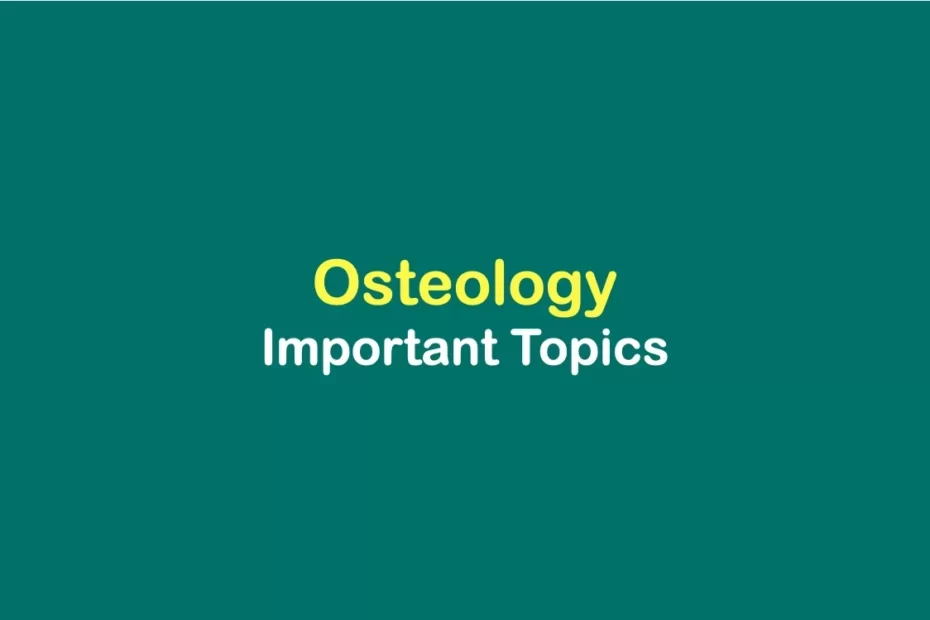In this post we are going to describe all the important questions topics of Osteology. This topics can help you to understand the theory and Viva exam questions.
Meaning/ Definition :
This is the study of the structure, development and the function of bones and cartilage.
–Additional to bones, other skeletal elements, teeth are also included sometimes.
What are the important topics :
1. Ossification of Bone :
–Ossification of bones can occur in two types.
- Intramembranous(Mesenchymal Ossification) : Mesenchymal cells comes together and differentiate —–> forms Osteoblasts —-> Osteoblasts releases osteoid(Ca2+, Alkaline Phosphate) —-> Osteocytes are formed (Which are found in Flat bones of the skull, Mandible, clavicle.)
- Intracartilaginous(Endochondral Ossification) : Chondrocytes are formed —-> Forms Hyaline cartilage —-> Bones are formed(All long bones like Femur)
2. Parts of a Young Bone :
There are mainly 3 parts of Young Bones : A) Diaphysis, B) Metaphysis, C) Epiphysis
A. Diaphysis : It is the central region of the shaft which are ossified from the primary centre.
B. Metaphysis : The portion of the diaphysis adjacent to the epiphyseal cartilage is called metaphysis.
C. Epiphysis : These are the ends of bones which are developed from secondary centre of ossification. Later it fuses with the Diaphysis.
3. Classification of Joints :
There are mainly 3 types of joints are present : A) Fibrous Joint, B) Cartilaginous Joint, C) Synovial Joint
- Fibrous Joint : Sutures, Syndesmosis, Gomphosis
- Cartilaginous Joints : Primary and Secondary joints.
- Synovial Joints :
——-> According to Shape : Plane joint, Hinge Joint, Pivot Joint, Condylar Joint, Ellipsoid joints, saddle-shaped sellar joints, Ball and Socket joints.
——> According to Axis of Movement : Uniaxial(Transverse axis- in Hinge Joint), Biaxial (On two axis- Ellipsoid Joint), Polyaxial(Ball and Socket Joint)
4. Function of Bones :
- Forms the skeleton which gives support and shape to the body.
- To protect important body organs, parts.
- Bone marrow produces Blood cells
- Bone marrow produce immunity providing cells
5. Blood Supply of the Bone :
| Young Long Bones | Long Short Bones | Short Bones | Vertebra | Rib |
| A) Nutrient Artery : It enters the shaft through the nutrient Foramen and runs through the cortex. | A) Nutrient Artery : It enters the middle of shaft and divides to form a plexus. | By Periosteal vessels | Anterior and posterior vertebral artery | Nutrient artery |
| B) Epiphyseal Arteries : Supply the epiphyseal area. | B) Periosteal Artery : It supplies the major part of bone. | Periosteal artery | ||
| C) Metaphyseal Artries : They pass directly into the metaphysis. | ||||
| D) Periosteal Arteries : Muscular and ligamentous attachments needs blood supply, so this artery helps to get the supply. |
6. Cartilage :
This is a connective tissue composed of cells (chondrocytes) and fibres(collagen or yellow elastic).
Types of Cartilage : A) Hyaline Cartilage , B) Fibrocartilage, C) Elastic cartilage
